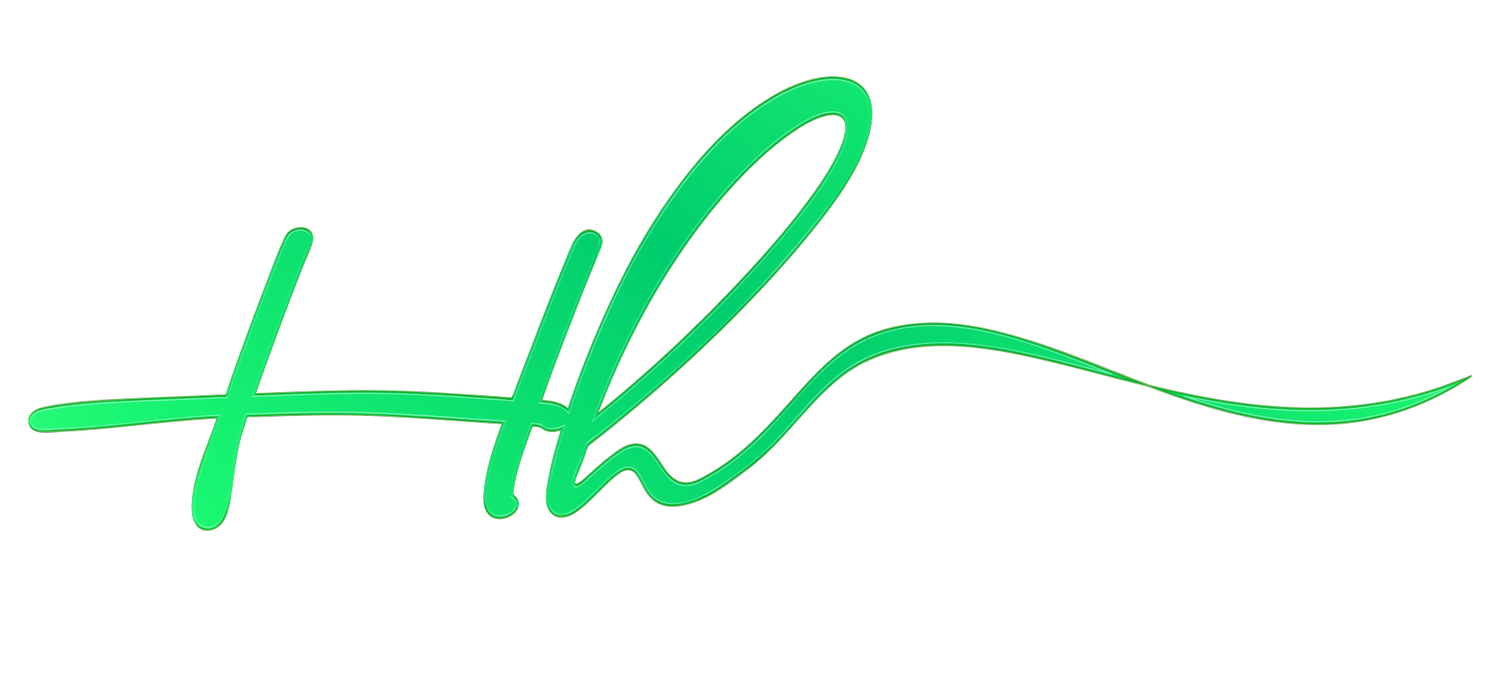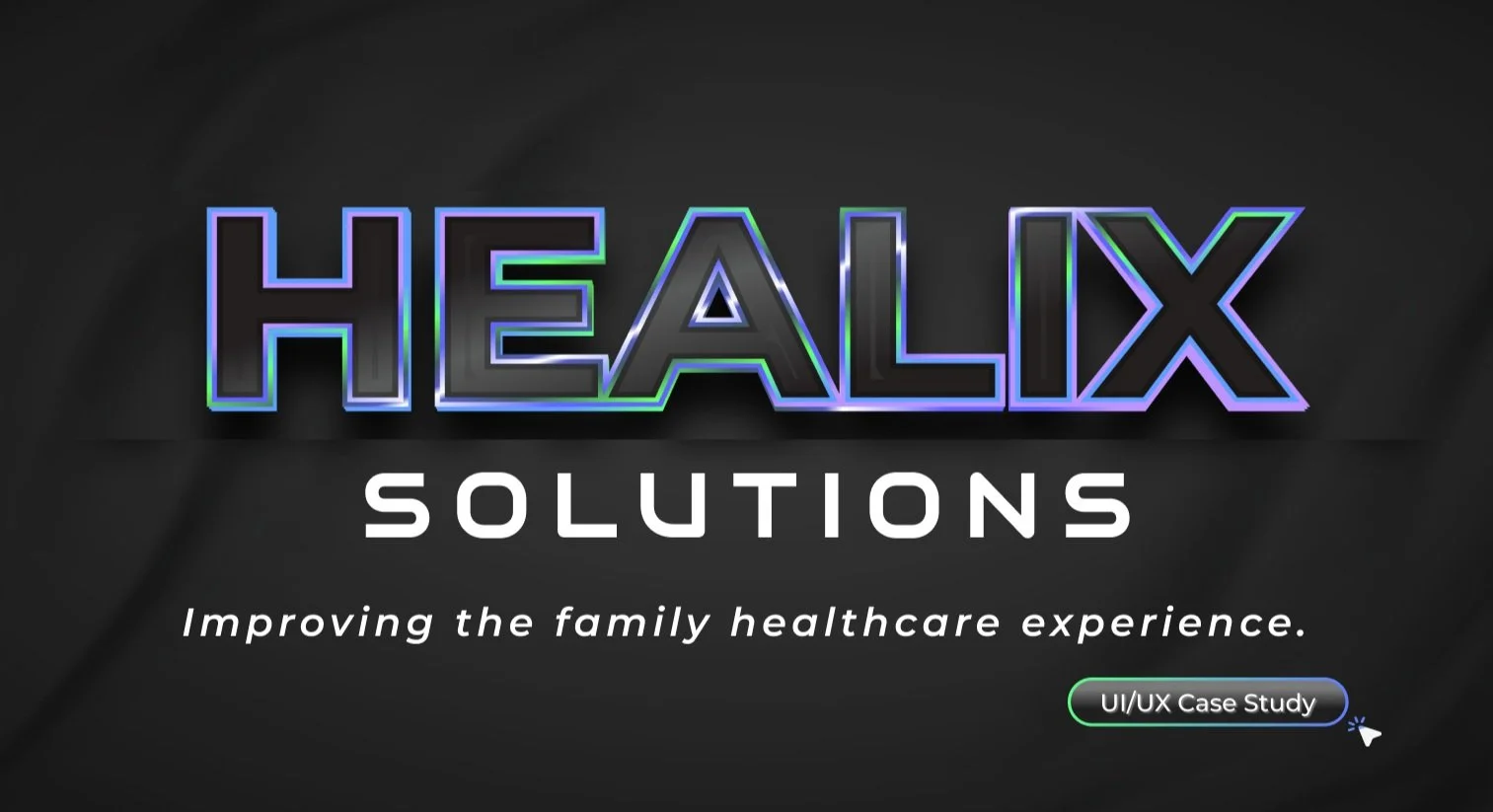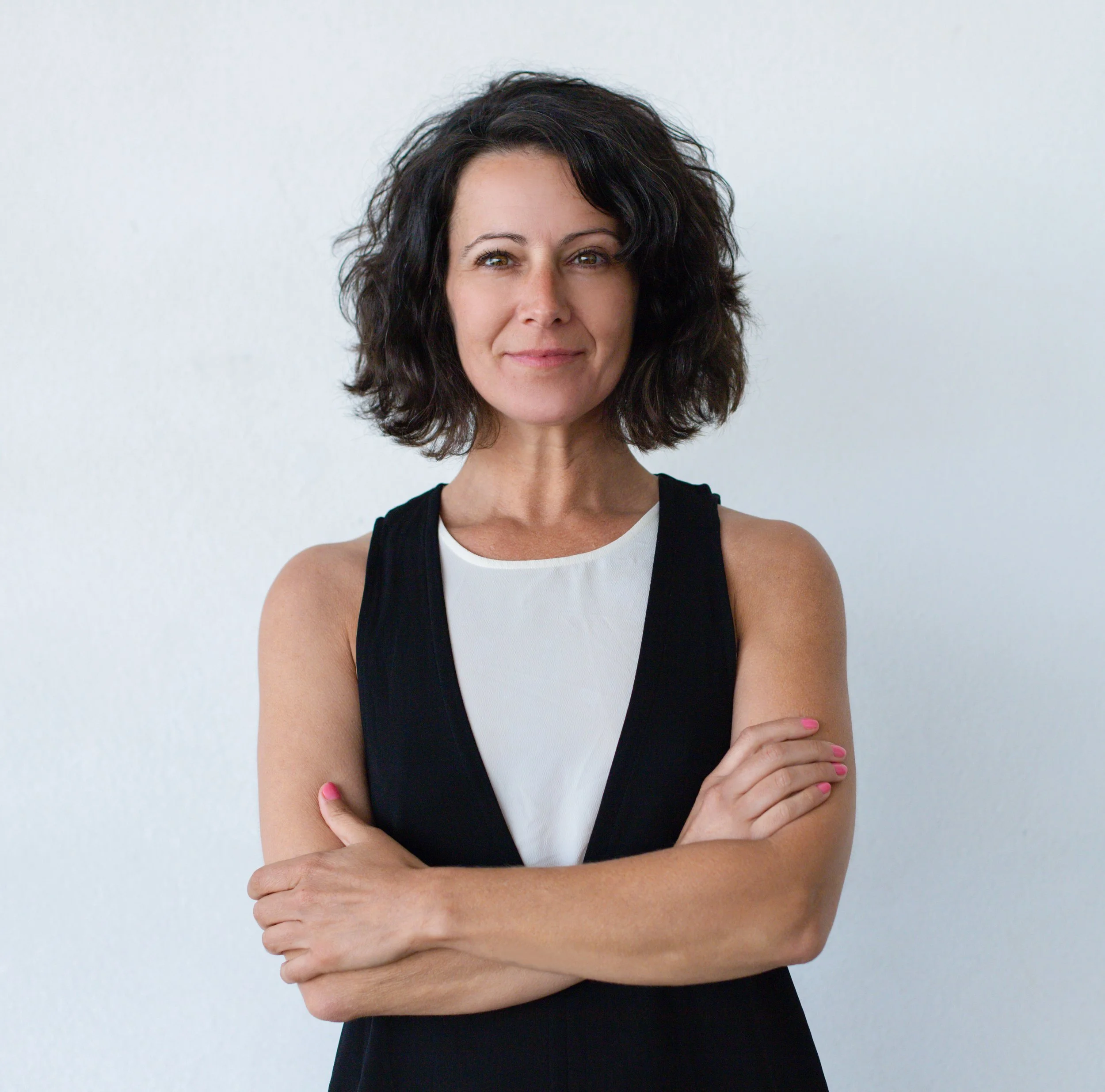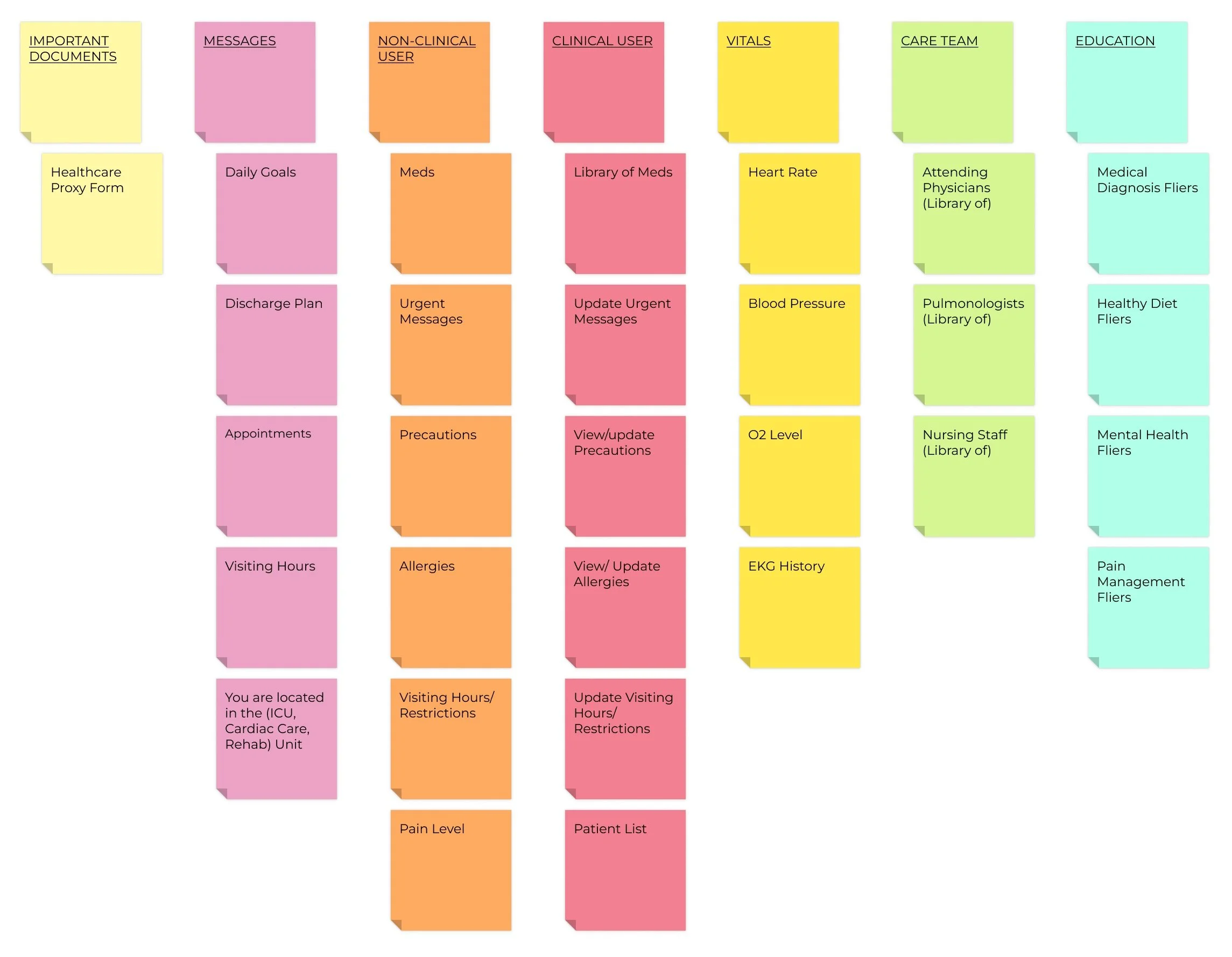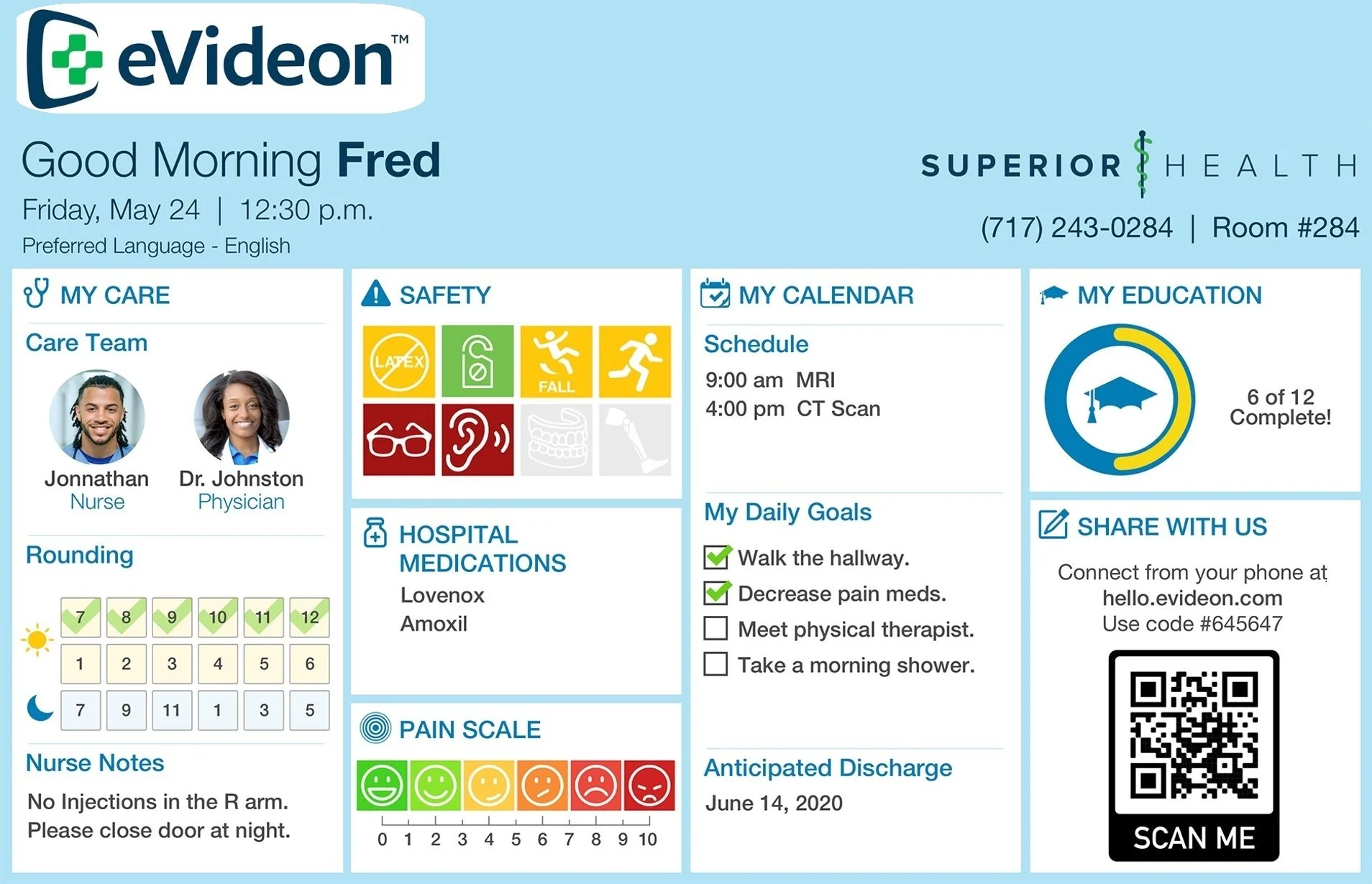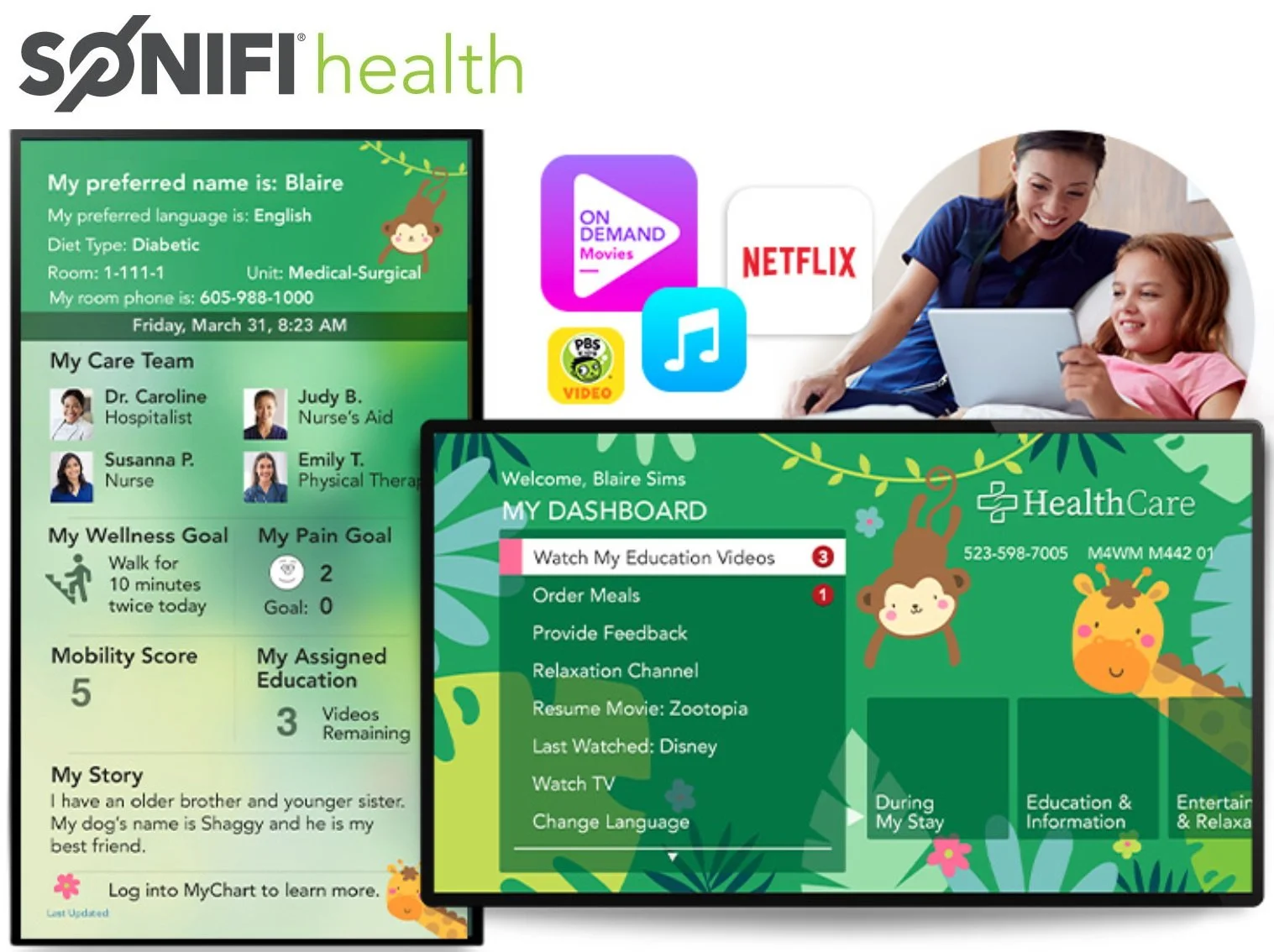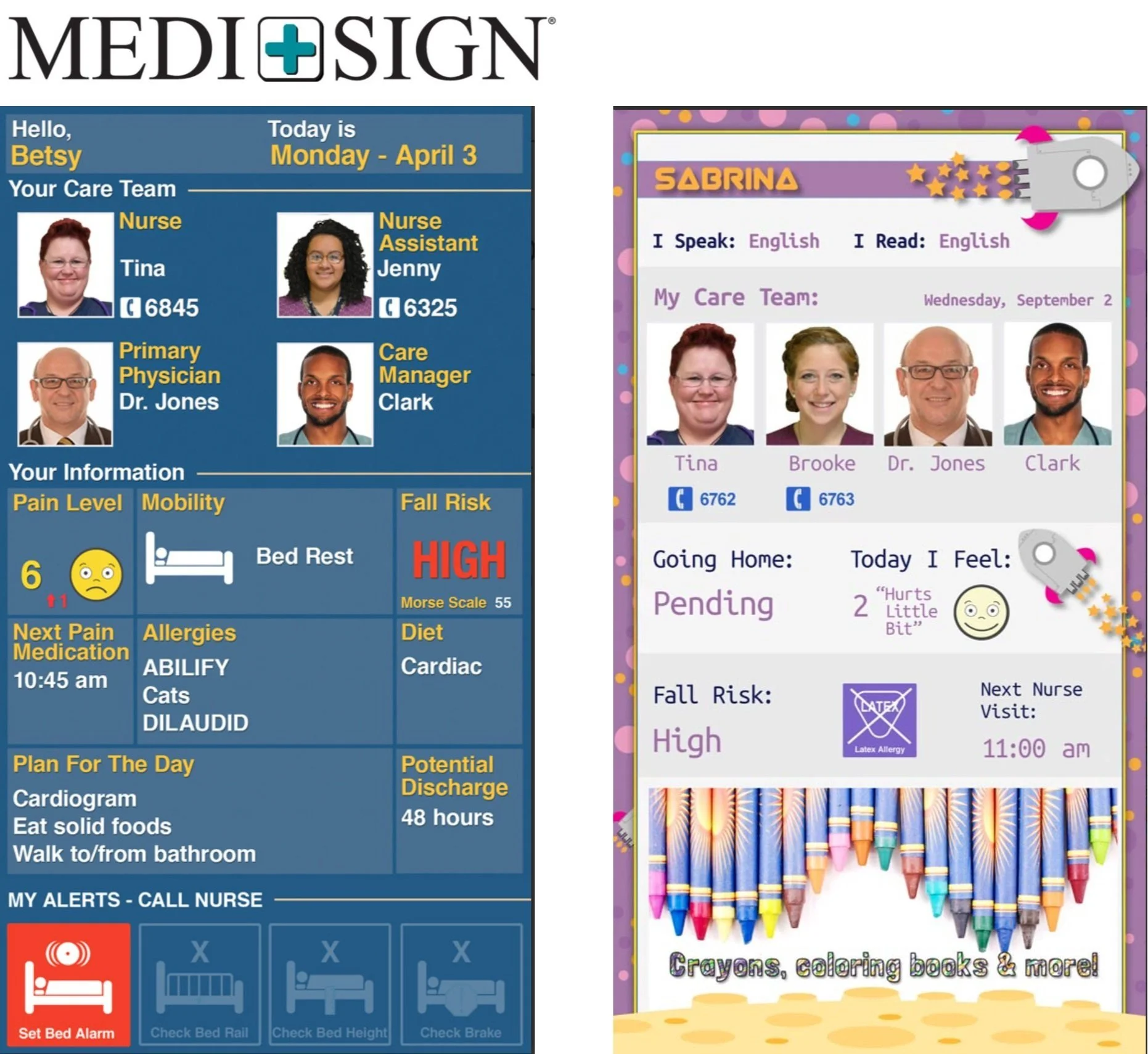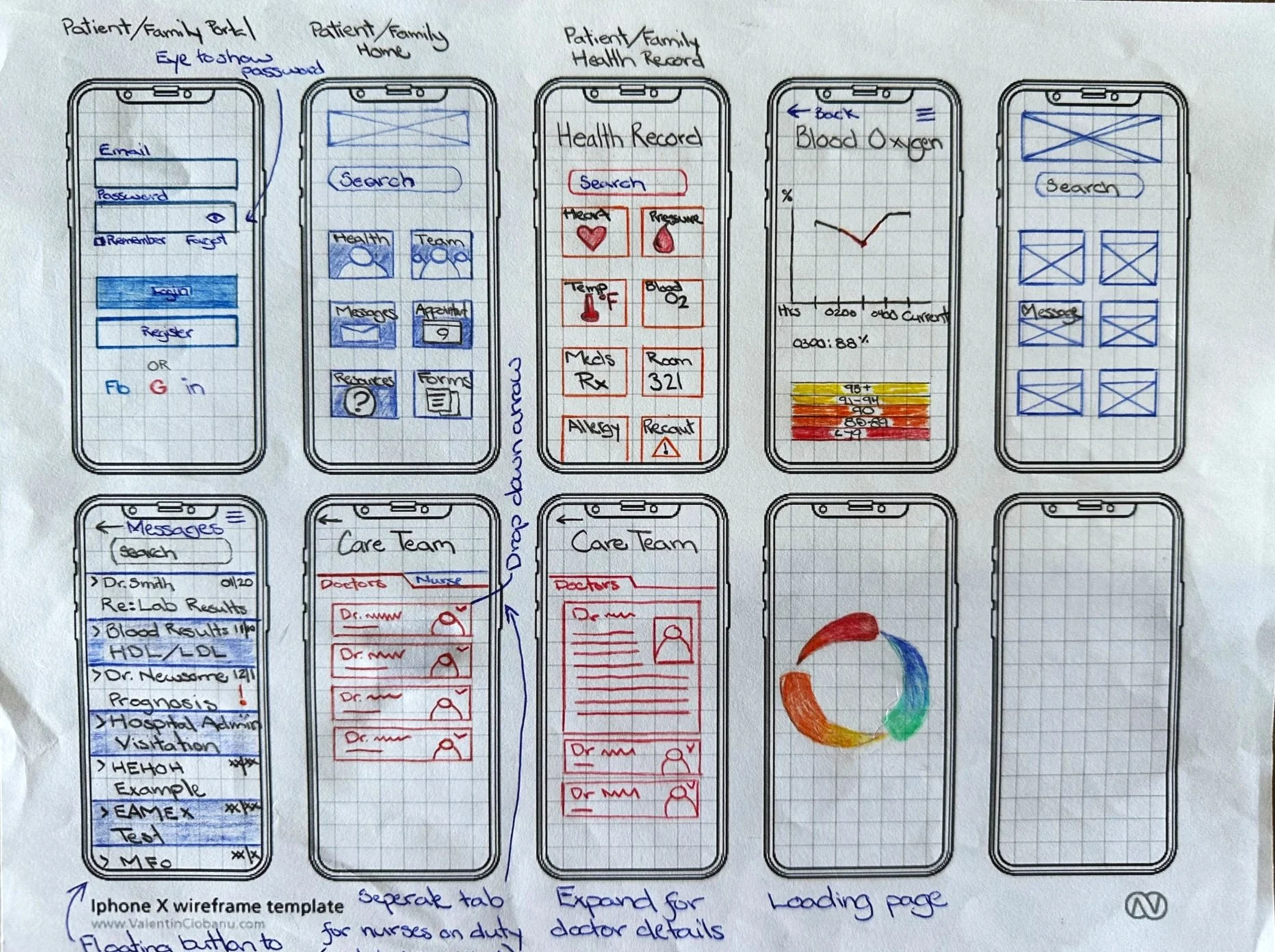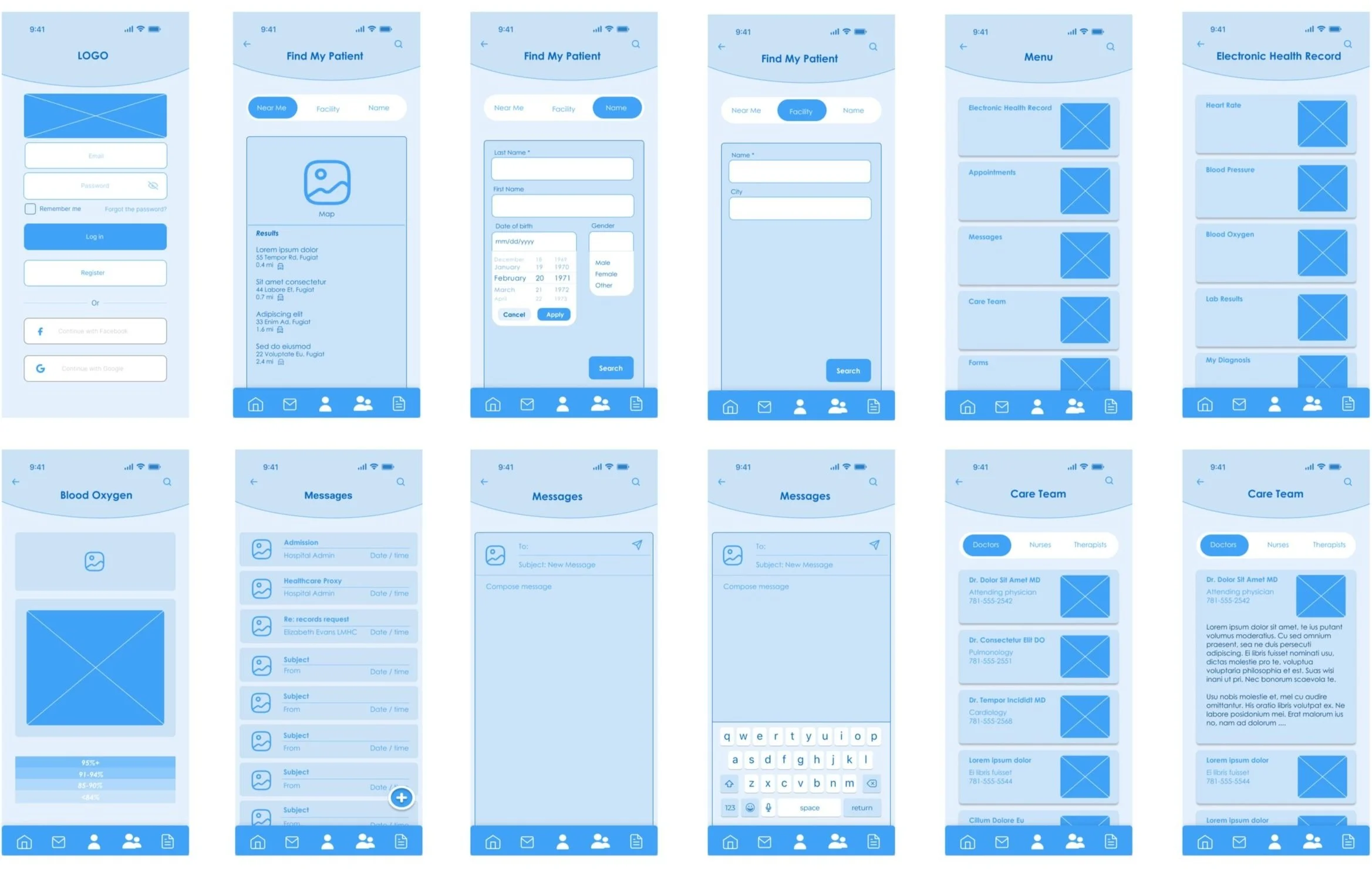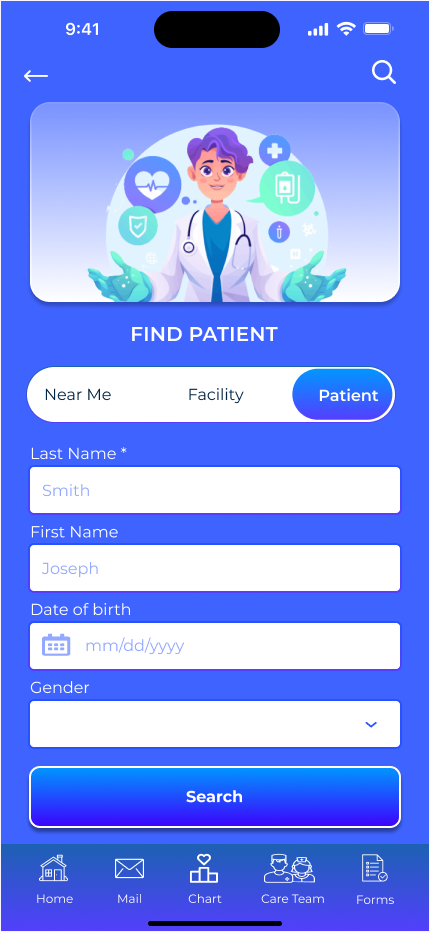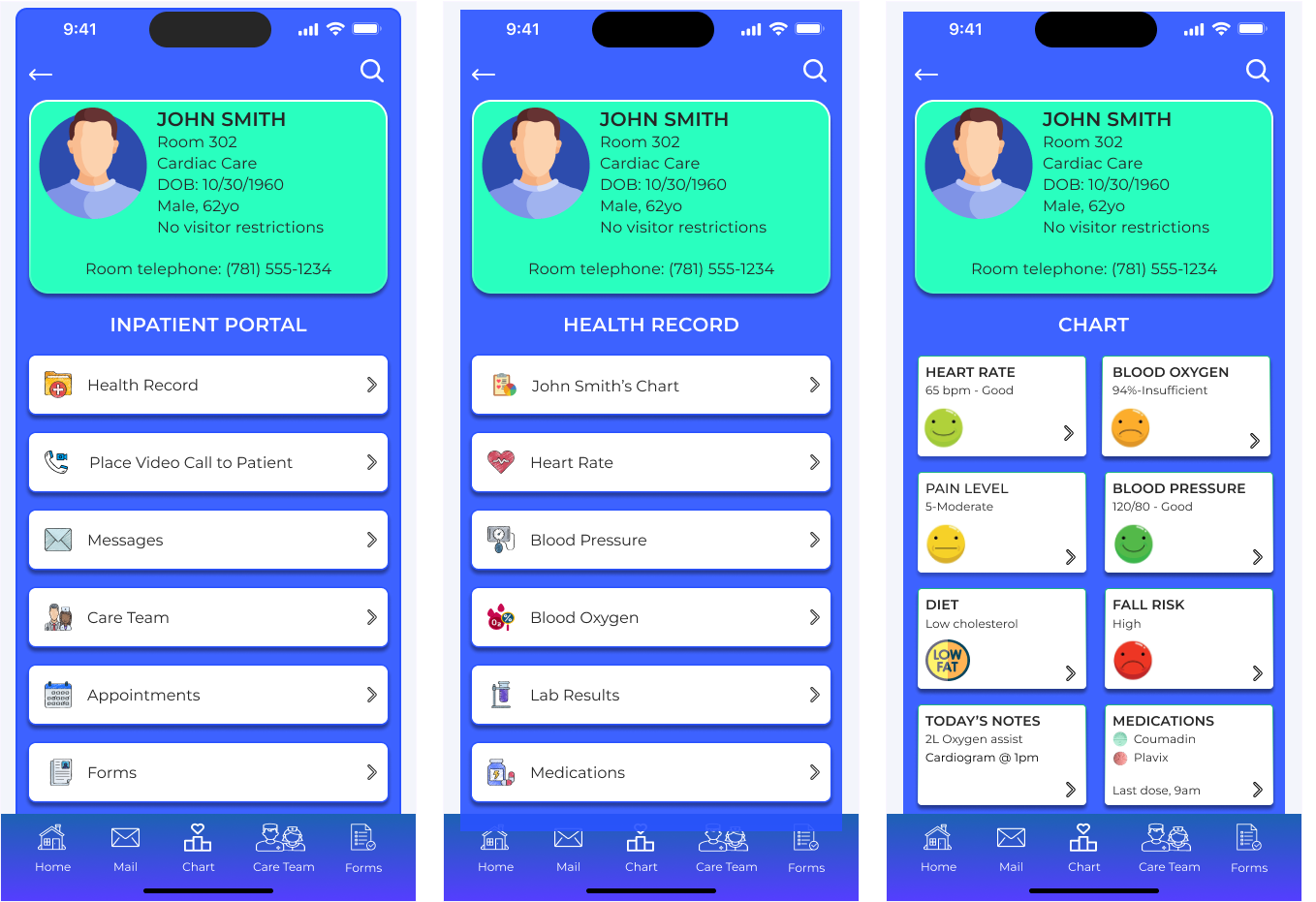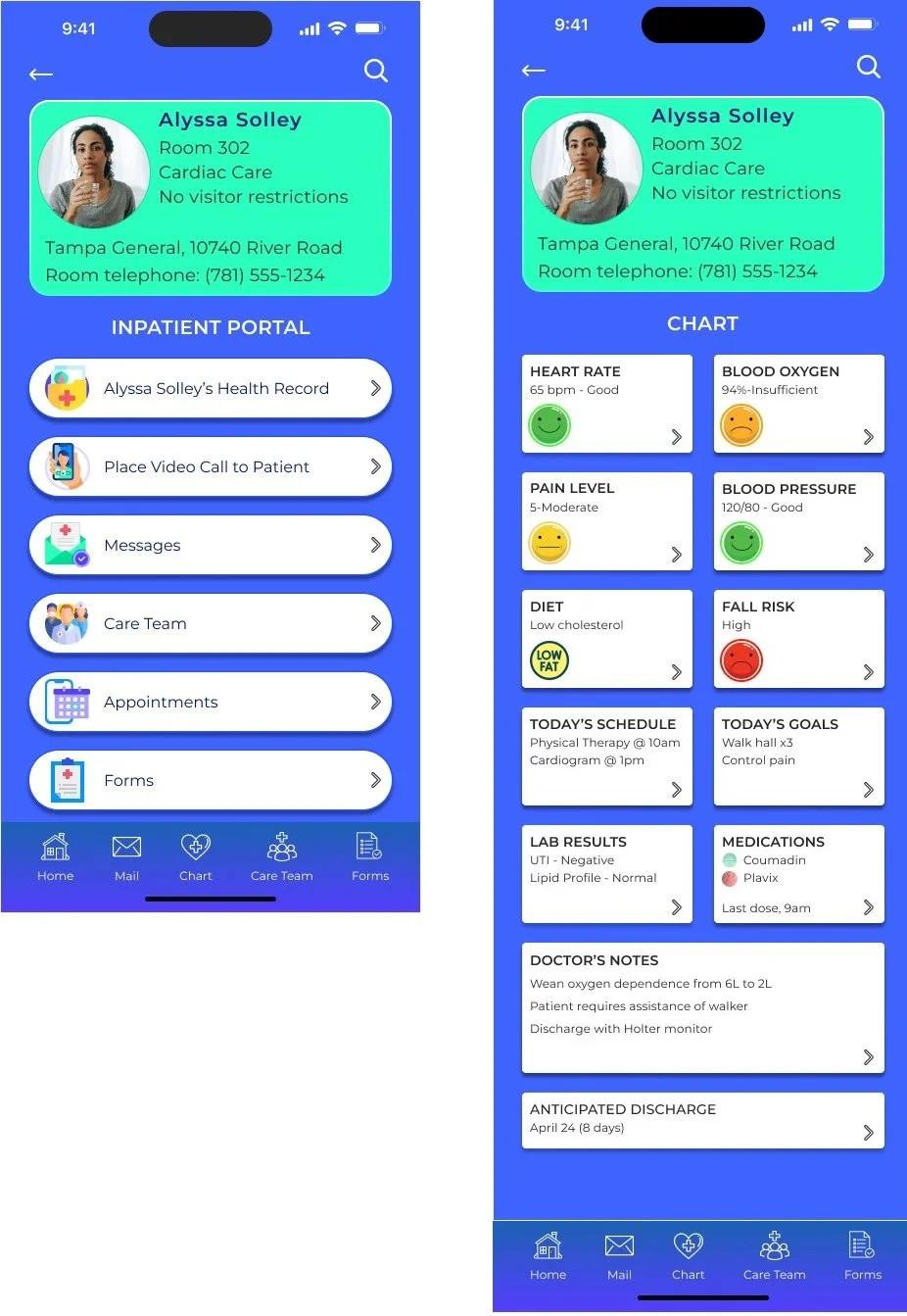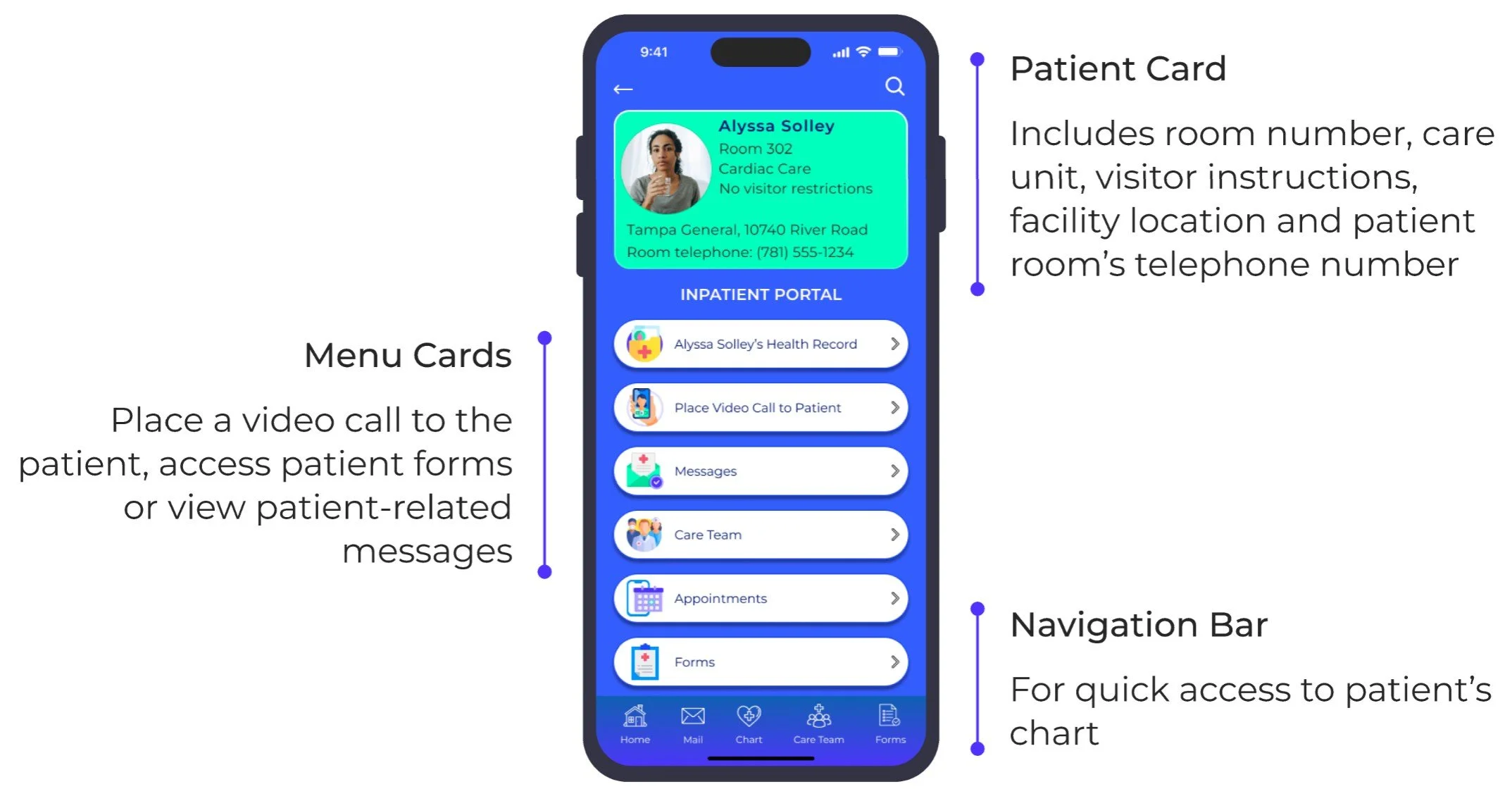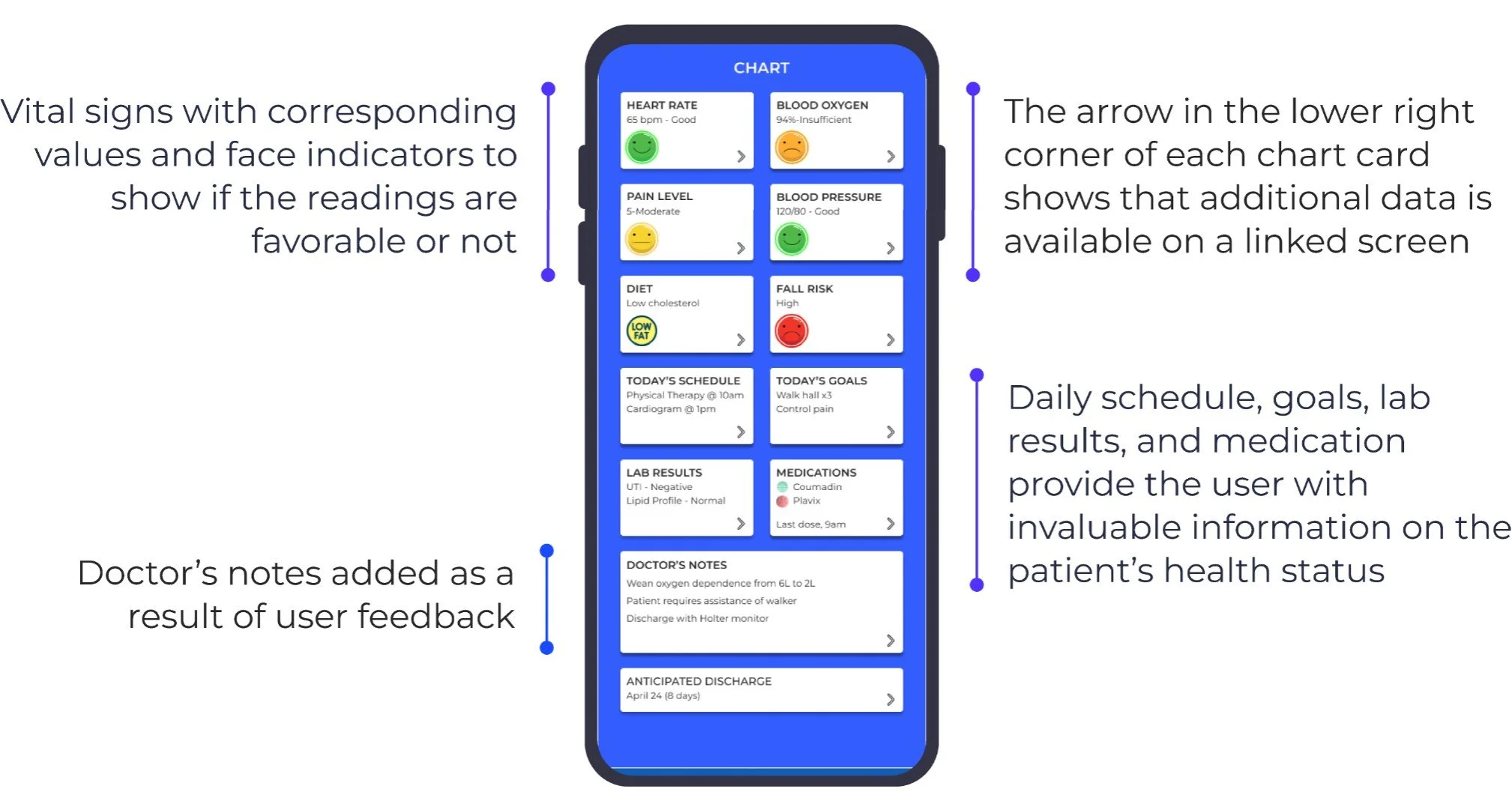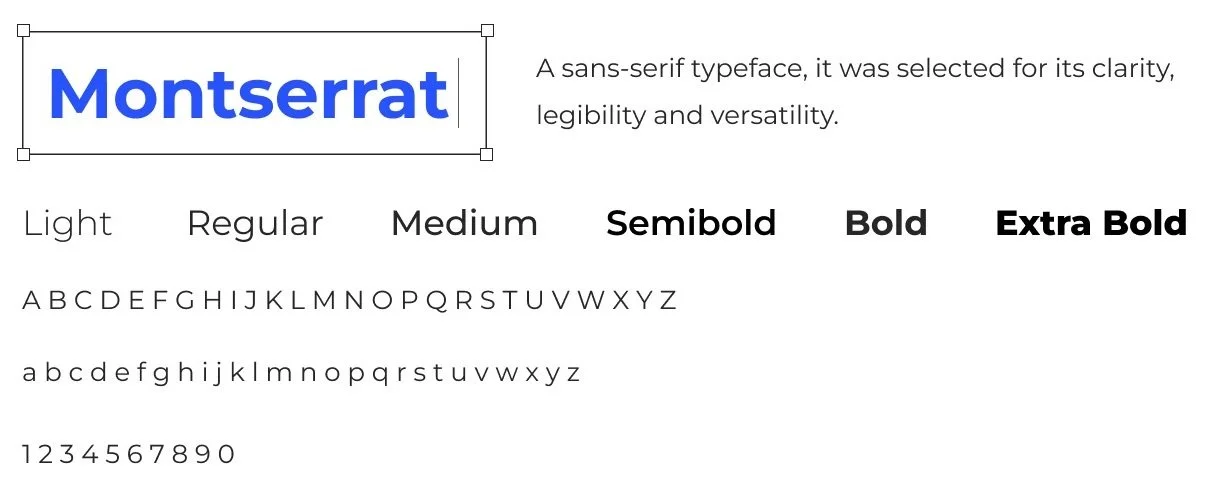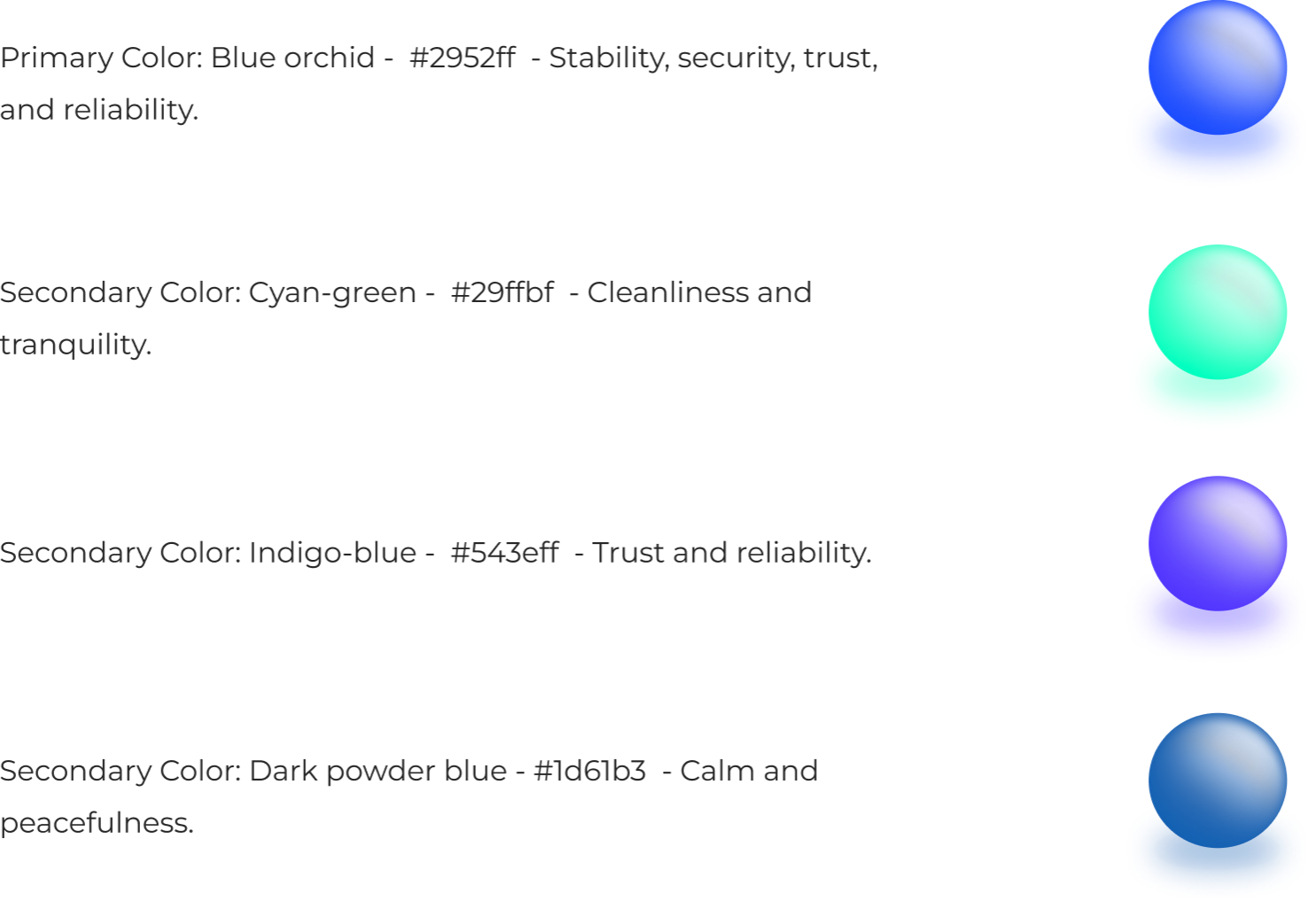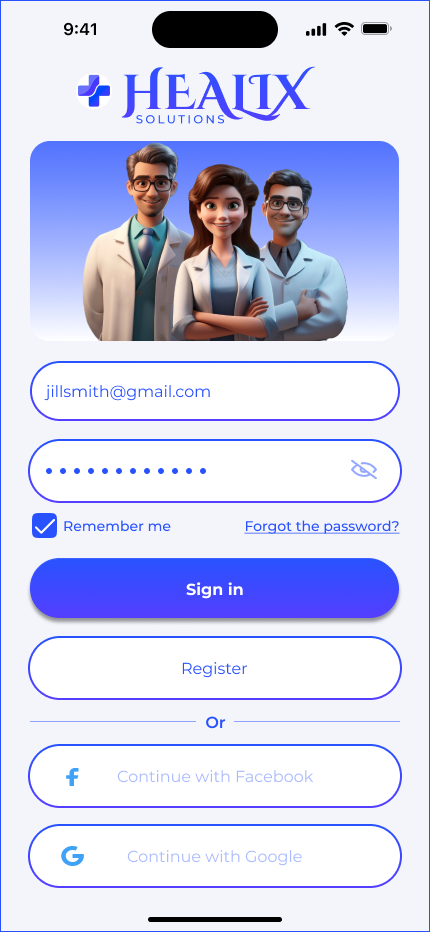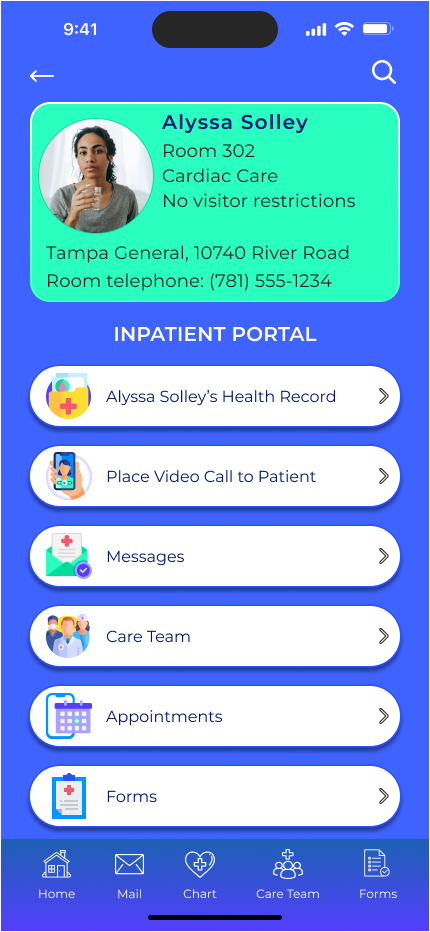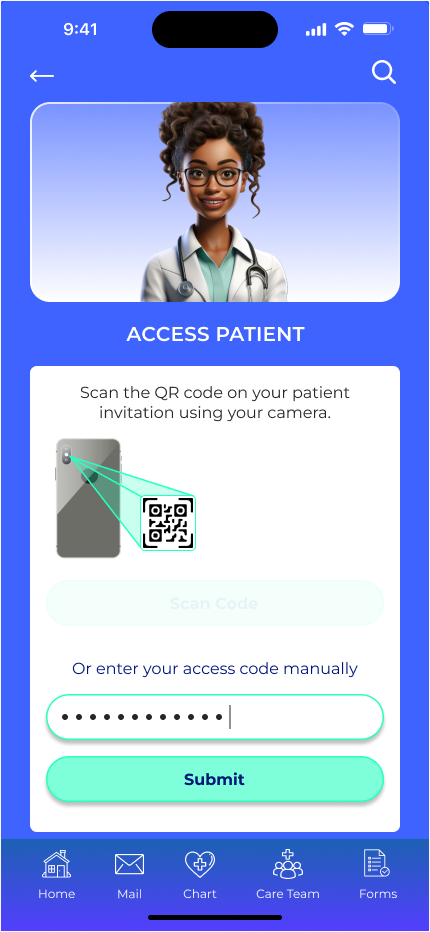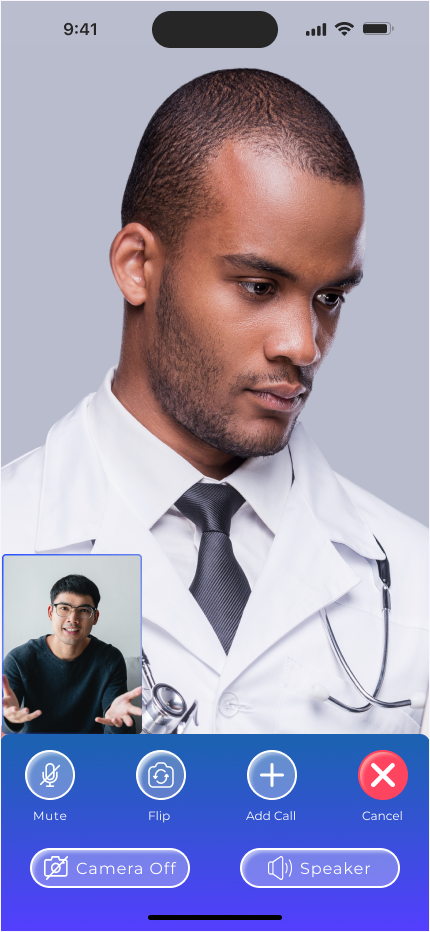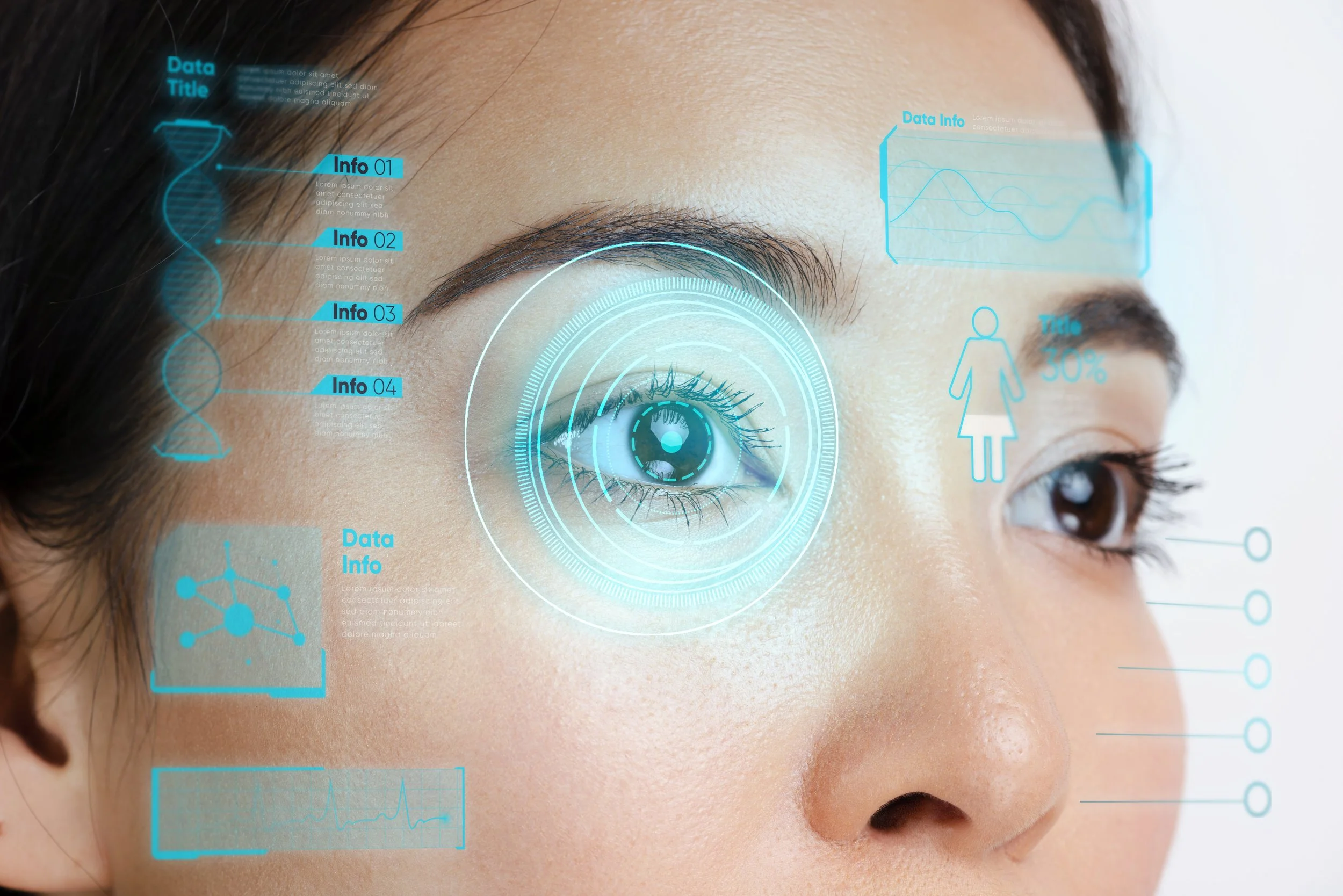Problem Statement
Covid-19 highlighted the importance of establishing a secure and sustainable way for healthcare providers to communicate with patient families.
During the pandemic, healthcare facilities were forced to restrict if not eliminate patient visitation. Accommodations put in place were done in haste and lacked sufficient planning. The tools used varied from one facility to another, and the policies depended largely on staff discretion. Given the need for a structured solution, we saw an opportunity to design a product that would incorporate security and consistency without further taxing healthcare workers.
Responsibilities
As lead designer, I participated in all phases of the design process from user interviews and competitive research through ideation, design and testing.
Product Users
No population is exempt from needing healthcare services. Whether or not you have a loved one in an inpatient facility depends on life circumstances. This product is aimed at anybody with a loved one in an inpatient facility.
From a healthcare perspective, the users would be nurses, doctors or anybody tasked with caring for patients and updating electronic health records.
Secondary Research
One of the biggest takeaways from the covid-19 pandemic is the need for alternative communication techniques between healthcare professionals and patient families. Health systems must adapt to maintain patient-centered care while acknowledging clinicians’ limited time to learn new skills.
PATIENT FAMILIES
Patient families report increased feelings of anxiety as a result of facility restrictions. When families cannot see patients, they are 100% reliant on the caretakers to provide timely and accurate patient health updates. Patient families have higher expectations on workers who are oftentimes feeling overwhelmed.
HEALTHCARE WORKERS
Burnout is caused by constant excessive stress in the workplace. A pre-covid study showed 20-40% of healthcare workers experienced severe levels of burnout, that number increased to more than 60% by spring 2021.
High levels of burnout result in frequent absences, and workers who are 1.5 times more likely to leave their jobs. Clinicians who stay in their job become apathetic which results in a lowered level of patient care, and can lead to medical errors.
Quantitative Research
Healthcare professionals interviewed agreed that improvement is needed in communication between clinicians and families, but that they are working at full capacity and do not have down time to spend training on new systems.
70% of participants believe that communication between doctors and families needs to be improved
50% of participants experienced restricted visitation with a family member
30% of participants were denied visitation with a family member
30% of participants had visitation via video
User Personas
HEALTH PROXY
Name: Sadie McGuire
Age: 54
Job: Executive
Bio
Sadie is the family matriarch. She is a 54 year old marketing executive with a post graduate degree. Sadie takes care of everything from planning Thanksgiving dinner to making sure that her husband and college-aged children have everything they need. Sadie’s elderly parents they rely on her heavily, both of them have named her as their Health Proxy.
Sadie’s high-profile job has her traveling frequently and spending most days in meetings.
In her free time Sadie likes to unplug and relax with her family.
Motivations
Stay on top of family matters.
Mentor lower level professionals.
Maintain a competitive career and salary.
HEALTHCARE WORKER
Name: Jessica Mack
Age: 34
Job: Registered Nurse
Bio
Jessica is starting to take on more responsibilities at the hospital where she works. She mentors new nurses, attends required training, and takes courses to build upon her skillset. Jessica has young children and the quintessential soccer Mom. She has a daily routine that includes dropping off the children at school and attending their after school activities. Jessica is comfortable with her shift, her career, her husband, and the life she has created.
Jessica has limited computer skills. She understands how to use the software required to document patient files and nothing beyond that.
Motivations
Provide a high level of care to patients.
Mentor new nurses.
Maintain competitive salary.
Pain Points
Being unreachable.
Not being able to get in contact with people she needs to speak with.
Pain Points
High staff turnover and sick calls.
Professional burn out.
Working double shifts to cover staff shortages.
How might we
How might we develop a secure and sustainable way for clinicians to communicate with families?
How might we streamline clinician workflow to alleviate occupational burnout?
How might we improve the healthcare experience for patient’s families?
How might we create a solution compliant with HIPAA regulations?
How might we prepare for future public health emergencies?
Minimal Viable Product
Just under 20 user stories were identified, with 7 needed for a minimal viable product (MVP).
In its simplest form, the user should be able to log in and obtain patient health information.
Information Architecture
Creating the site map was instrumental in determining what should be included in the app and how the information should be organized.
Competitive Analysis
Being denied visitation puts families at a disadvantage since they’re not privy to the data on the patient’s hospital whiteboard. While not comprehensive, whiteboards provide some insight. When considering a solution for this problem, I thought it would be beneficial if families were provided access to patient hospital whiteboards. My research showed that there has been a recent shift from traditional dry-erase whiteboards to electronic whiteboards.
eVideon - Digital Whiteboards
Features:
Can communicate with any electronic health record via a specialized interface (HL7).
Streamlines nurse workload by updating directly from the patient’s health record in real time.
Has a sleep aid that helps patients sleep with noise and light control,
Customizable categories and branding.
SONIFI Health - Digital Whiteboards
Features:
Personalize the patient’s board to cater to their interests (pediatric whiteboards).
Displays care notes or personal messaging.
Boards can be shown horizontal or vertical.
Prompts patient to view educational material related to their discharge from the facility.
MEDI+SIGN - Digital Whiteboard
Features:
Anti-Fall™ technology.
Backlighting adjusts to room light.
A survey of users found that 80% of healthcare workers agree that digital whiteboards improve productivity.
Available in 6 languages with more on the way.
Sketches
Initial iterations featured hospital whiteboard data along with care team profiles, lab results, and messaging screens. Understanding that HIPAA-compliance would be crucial to a successful experience, I explored second level authentication and alternative sign-in options.
Wireframes
AB usability testing provided insight into user expectations, and resulted in amendments to the way users were instructed on subsequent tests.
The wireframes presented the user an opportunity to navigate a basic flow from sign-in to finding a patient, then onto view the patient’s health record. A typical messaging flow was added as well as care team profile screens.
Usability Testing
Initial usability testing provided invaluable user feedback, resulting in a number of design changes.
HIPAA Considerations
HIPAA compliance challenges were noted and it was thought that it would be best addressed as a DEVOPS task instead of building it into the design. Users had strong opinions pertaining to HIPAA, making it a crucial design challenge that had to be addressed.
The original design provided a patient search option which would yield open-ended results and potential HIPAA violations. To remediate user concerns, a QR code has been added to access specific patient portals. The QR code is to be given to the health proxy or other pre-approved patient representative. A unique code be on the same document for users not familiar with QR codes.
Before
After
Screen Redundancy
A Health Record screen was imagined since the first iteration of this application. When users navigated through the test site, it was observed that the Health Record screen only delayed the user in their effort to reach the desired inpatient information. The Health Record screen was concluded to not add value to the user experience and was therefore eliminated.
Before
After
Major Screens
Inpatient Portal
Chart
Heart Rate Detail
The heart rate detail screen shows up to date EKG data with a 1-minute delay. The bar graph shows that the patient’s heart rate has generally been within the average range for a 26-35 year old female patient. According to this graph, the patient’s heart rate peaked with a poor reading on Thursday.
Style Guide
Name and logo:
Logo font: HEALIX, Cinzel Decorative, Bold. SOLUTIONS, Montserrat, Medium, Spacing 14%.
he-lix. A spiral or coil shape. A symbol of resilience. Found throughout nature, a building block of DNA which is a double helix.
The alternative spelling incorporates the word ‘heal’, appropriate for a health services company.
Typography
Color Palette
Screens
Login
Heart Rate
Patient Chart
Home
Inpatient Portal
Care Team Detail
Access Patient
Connected to Doctor
Logged Out
Covid-19 highlighted the importance of eliminating activities that do not add value to daily operations. Manually updating dry-erase whiteboards is an antiquated process but was still practiced since there was no real push to overhaul systems. Now that the dust has settled, we must implement systems that will allow us to better prepare for the future.
As budgets allow, healthcare facilities are upgrading to electronic patient whiteboards. The technology allows clinicians to update patient whiteboards at the same time the information is changed on their chart. Patients like having the ability to adjust display brightness, font size, and language to name a few. Patients also receive real-time health updates on their whiteboard when their electronic health record is updated. Implementing electronic whiteboards is a crucial step in minimizing healthcare worker burnout.
The development of Healix Solutions’ mobile application is the perfect compliment to the electronic whiteboard. Using the Healix Solutions application, families can view the same real-time updates that are pushed out to the electronic patient whiteboard.
The number of different electronic whiteboards has doubled since I first started researching this topic. It will not be long before every room in hospital is equipped with this technology. As more companies throw their hat into the ring, the company with the best user experience will reap the greatest reward.
